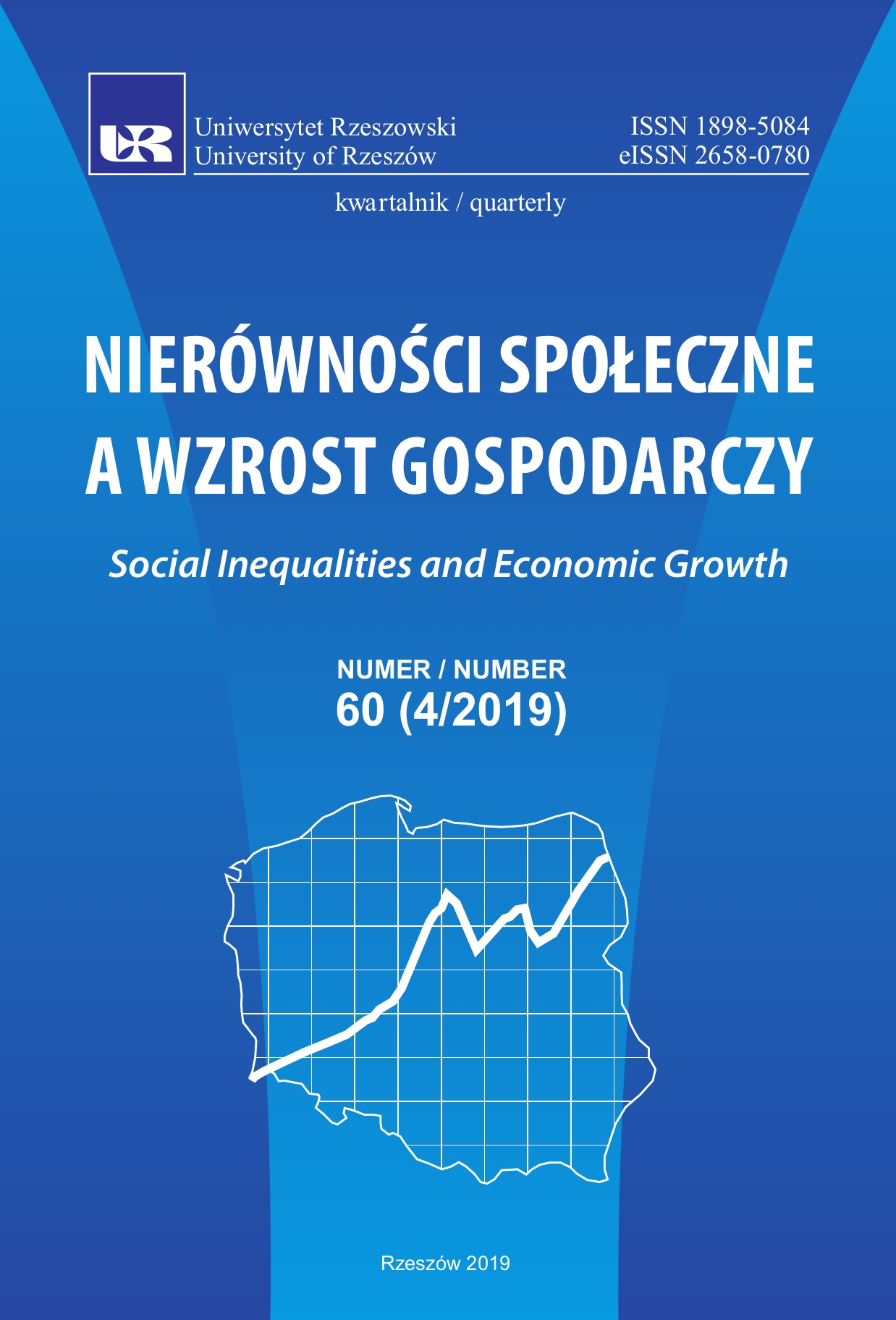The structure of income inequality with particular emphasis on the economic middle class
DOI:
https://doi.org/10.15584/nsawg.2019.4.3Keywords:
income inequalities, middle class, polarizationAbstract
This study presents the main facts related to the development of income inequalities in OECD countries in recent years. In particular, the focus was on analysing the economic position of the middle class (middle income class), which is often neglected in analyses, in favour of the two extreme income groups, i.e. the poverty sphere and the group of the richest. It is worth filling this gap because the middle class is the backbone of modern society and decisively determines the possibilities of economic development. The analysis of the coefficients allowing the estimation of the size and affluence of the middle class indicates that this class is highly diversified among OECD countries. In countries such as: Slovakia, Slovenia, Norway, the Czech Republic, the Netherlands, Denmark, Hungary, Finland, Belgium, Sweden and Austria, there is a relatively large and affluent middle class. In contrast, in Anglo-Saxon countries, the middle class is relatively small and moderately affluent. The article empirically confirms the hypothesis that higher income inequalities are accompanied by middle-class erosion. Using the basic income ratio, in the form of the Gini coefficient for disposable income, a very strong negative correlation was identified both between this coefficient and the coefficient determining the size of the middle class (-0.91) and between the Gini coefficient and the coefficient determining the affluence of the middle class (-0, 84). Attention is paid to possible causes of the occurrence of the phenomenon of economic polarization. Proposals for solutions in the field of socio-economic policy aimed at limiting the scale of observed phenomena were also presented.Downloads
Downloads
Published
2020-11-13
How to Cite
Szymańska, A. (2020). The structure of income inequality with particular emphasis on the economic middle class. Social Inequalities and Economic Growth, 4(60), 45–60. https://doi.org/10.15584/nsawg.2019.4.3
Issue
Section
Articles
License
Copyright (c) 2019 University of Rzeszow

This work is licensed under a Creative Commons Attribution-ShareAlike 4.0 International License.


